Emu Plains, New South Wales, Australia, is located on the western side of the Nepean River, at the foot of the Blue Mountains.
Interestingly, the etymology of the word "emu" is thought to have come from an Arabic word for a large bird. This word was later used by Portuguese
explorers to describe the related cassowary in Australia and New Guinea. The Australian emu was known as
murawung or
birabayin to the local
Eora and
Darug language.
The Darug People
Prior to British settlement, the Darug people occupied
the land around Emu Plains and most likely, conducted fire-stick farming, a practice of burning extensively and systematically throughout the year to ensure plentiful
wildlife and plant foods.
The inland Darug people of the Nepean area were
paiendra or "tomahawk people", who hunted animals like kangaroos, emus and used stone axes. These people often lived in natural caves and sandstone overhangs.
Sir William Dawes, an officer of the First Fleet, was the first person to record the original Aboriginal languages of the Darug people. Some Darug words absorbed into English are: dingo, koala, wallaby and wombat.
Aboriginal totems are a natural object, plant, animal and even weather that is inherited by members of a Clan. Darug totems include the Goanna, Lizards, Cockatoos, Eagle, Grasshoppers, Butterflies, Spiders and their Web, Bees, Honey Combs and even Ants.
Around the age of 14, male Darug youths would be initiated. Bora ceremonies could be conducted and the youths would be covered in
ochre and grease and given a possum belt to wear. Charcoal was added to the head, which was draped in a cloak of skin. After being given a totem name, the youth was prohibited from eating that animal. As part of the initiation, the front tooth was knocked out.
Only men could take part or view these initiation ceremonies. Women were forbidden to attend. Women conducted separate ceremonies, from which males were prohibited.
 |
| Boomerangs were used by Aboriginal people, weapons and a tool, for hunting and digging, and in ceremonies |
Watkin Tench, commander of the marines, had
arrived in New South Wales on the First Fleet transport ship,
Charlotte, that reached Botany Bay on 20 January 1788.
In August 1790, Watkin Tench and a party of exploration headed out west and came upon the Nepean River (Deerabin). The river was named Nepean River after Sir Evan Nepean, a British Cabinet Minister and an organiser of the First Fleet (he is also an ancestor of actor Hugh Grant).
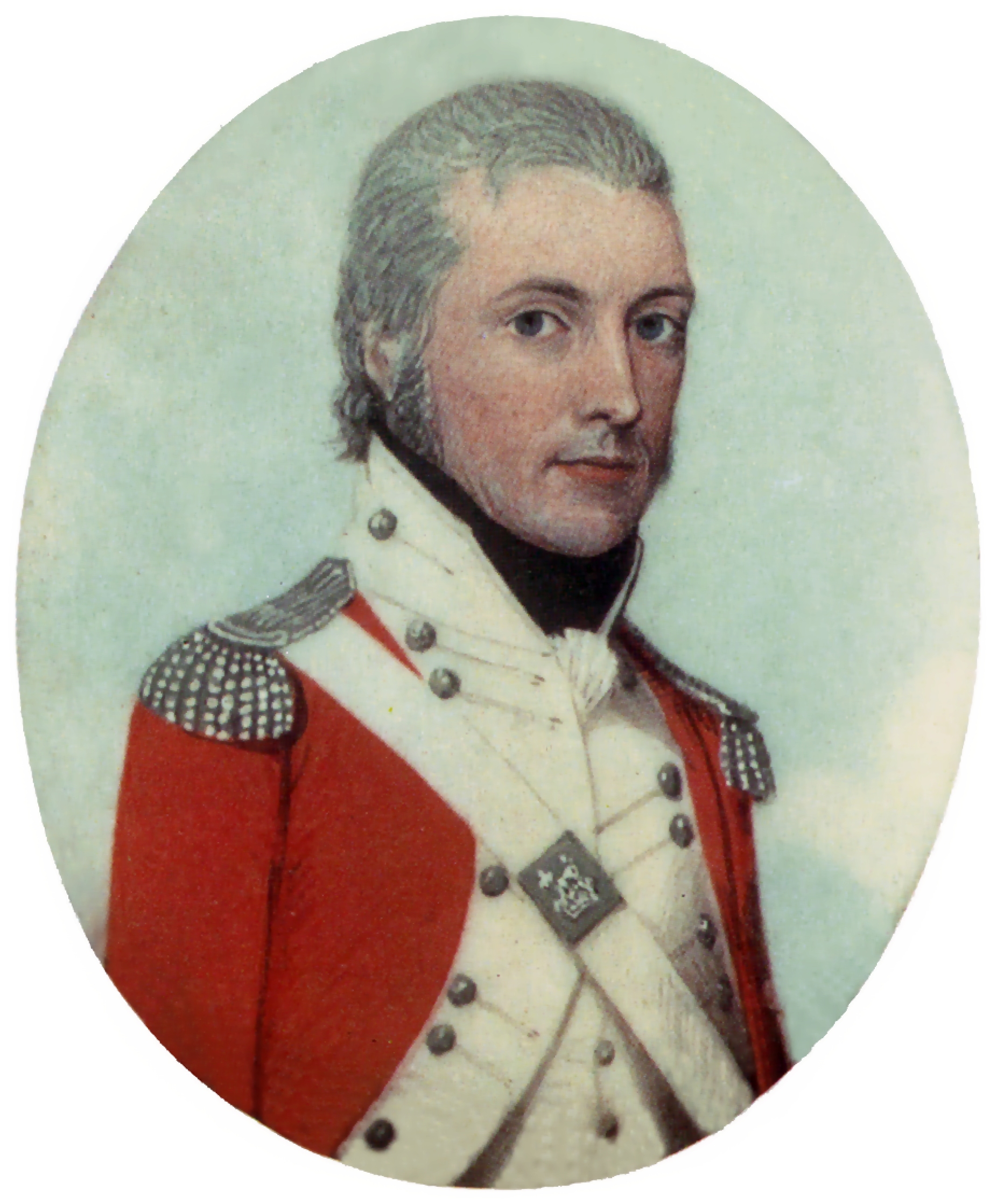 |
| Portrait of Captain Watkin Tench (he retired as a lieutenant-general) from a contemporary miniature |
Tench said of the Nepean River:
"We found ourselves on the banks of a river, nearly as broad as the Thames at Putney and apparently of great depth".
Tench said of the Aboriginal people:
"I do not hesitate to declare that the natives of New South Wales
possess a considerable portion of that acumen, or sharpness of intellect, which bespeaks genius".
The Tench led expedition found ample evidence of Aboriginal activity along the banks of the Nepean river - hunting huts, marks on trees, possum traps and decoys for birds.
The expedition struggled through “reeds, thickets, and a thousand other objects” around Emu Island.
Tench named
the area near the Nepean river Emu Island after emus they saw. The group mistakenly believed that they were on an island in the Nepean River.
Lieutenant William Dawes, who accompanied Tench on several expeditions, was the first recorded European to penetrate the Blue Mountains and reach the vicinity of Faulconbridge-Linden.
The Crossing
The first Europeans to cross the Blue Mountains were Gregory Blaxland, William Lawson and William Charles Wentworth in 1813.
Aboriginal people often acted as guides and
shared knowledge about the local environment. However, their traditional lifestyles would soon be severely disrupted.
John Jamieson
Thomas Jamison (born County Antrim, Ireland) became a prominent surgeon, was a member of the First Fleet expedition of 11 ships which arrived in New South Wales in 1788. In 1805, he received a 1,000-acre (4.0 km2) grant of land on the Nepean River.
In 1818, Thomas' son John Jamieson and a party set off on the Nepean River to investigate the relationship between the Nepean and Cox’s Rivers. Included in this party was a Darug man called Gilderoy (also called Bob). However,
the exploration was cut short as the boat was damaged.
Jamieson organised another party led by Thomas Jones, which included Darug men Gilderoy, Millot (Joe) and Nagga (Jack), to trace the Cox’s River from Hartley.
After inheriting the land at Penrith from his father, which he called Regentville, located east of the Nepean River, John Jamison
built a large two-storey mansion. In 1824, William Houghton described the property:
“Sir John Jamison, who resides on his estate opposite Emu Plains, took me to see his new house. It stands on the top of a long, gentle ascent and is certainly a noble mansion".
Convicts and Courthouse
Not Long after the Tench expedition, convicts were sent to establish a settlement at Emu Plains. In Commissioner Bigge's report on Government buildings at Penrith and Emu Plains, 1819, it was reported that there was a commodious weatherboard courthouse and lock-up house. Also accommodation for the district Constable and the watchman belonging to the district of Castlereagh. The first constable
for Emu Plains was a Mr Proctor.
There is a record of tobacco being grown at Emu Plains in 1803, the first in Australia.
The soldiers' barracks at Emu Plains was located on Cary Street. These buildings were later sold to the Raynor Bros., who
established a factory to make tweed cloth. Abraham Raynor used to walk to Sydney and back in one day to conduct business (
1.).
 |
| The stone building located at 281 Great Western Highway, Emu Plains, NSW, was the home of one of the Raynor brothers. |
The stone building located at 281 Great Western Highway, Emu Plains, was the home of one of the Raynor brothers. (Abraham RAYNER, died, 24 Aug 1902 in Emu Plains, aged 93 years (born c 1809, Dublin, Ireland). A poem about the tweed mill appeared in the newspaper in 1903 (
2.)
Governor Macquarie began the annual feast at Parramatta in 1814 as part of his program to end the violent frontier conflict occurring on the Hawkesbury/Nepean River.
was the house built for the
officer-in-charge and,
in Nepean Street, on the same
property were two semi
detached houses for the use
of other junior officers.
Between the barracks and
house of the officer-in-charge
was the parade ground. A
ring, where the soldiers
paraded, could plainly be
seen many years afterwards.
Opposite the barracks were
the constable's home and
lock-up, where prisoners were
put in charge of the constable
to be taken to Penrith court
house for trial."EMU PLAINS HISTORY Naming of Emu Plains: Early Industries (1961, January 19). Nepean Times (Penrith, NSW : 1882 - 1962)Emu Plains convict stockade, built of solid brick, was constructed about 1816.
Convicts were used to build roads, clear trees and grow crops in the district.
A f
emale stockade at Emu Plains only lasted two years. Women from the Female Factory at Parramatta were sent here.
In 1819, The Emu Plains Agricultural Farm was established to provide employment for convicts and to produce additional food for the colony.
"...the Government sold the stock from the farm at Emu Plains (1822) as per the "Sydney Gazette". Some 2000 head of stock were sold and the blood mares by "Satellite" were purchased by John Maxwell hence the fine animals that carried the Mounted Police practically all over Australia."
Nepean Times (Penrith, NSW : 1882 - 1962), Thursday 22 March 1956
The farm was turned into a penal settlement. There were about 1000 convicts settled here with 200 soldiers over them.
The convict station at Emu Plains produced a large amount of wheat.
Richard Fitzgerald, an ex-convict, was the first superintendent of the 270 convicts and 11 overseers. The farm was closed in 1832 and the land was sold off to free settlers who wished to make Emu Plains
their home.
A description from 1835 states that the convicts were:"........attended by a Military Guard day and night to prevent escape, wear Irons upon both legs and at night are locked up in small wooden houses containing about a dozen sleeping places: escape is impossible".
Michael Murphy, who was born in 1758 in Wexford, Ireland, served as a private in the Royal Marines on the First Fleet in 1788 on the ship
HMS Sirius. Later, he served in the NSW Corp., from 1819 to 1823 at Emu Plains. Murphy died on 10 January 1823 at Emu Plains and was buried at St Matthews,
Windsor.
The renown naturalist, Charles Darwin, stayed at Emu Plains on his visit to Australia in 1836. Darwin stayed at the inn at "Emu Ferry" and
the next day crossed the Nepean River and continued his journey toward Blackheath.
Free Settlers
The village of Emu Plains was laid out by the Government Surveyor, 20 May 1832.
 |
Emu Plains (near Walkers Crescent, NSW, n.d. State Archives |
After free settlers moved in, Emu Plains was still mostly an agricultural and fruit-growing area.
The Arms of Australia Inn
Back in the early days of the colony, there were about 23 inns in the Nepean District. One of these, The Arms of Australia Inn, began construction around 1826 and was then bought on 1st May 1833, by Joseph Barrow Montefiore. Travellers who arrived at the inn, often had to sleep in the barn, on the veranda or under their wagons, as the inn had only two main rooms.
According to the
Arms of Australia Inn Museum: "As bushrangers were a great problem in the area, the Arms and a second inn at the top of the hill had a system to warn travellers if bushrangers were about. This was accomplished by the inn at the top of the hill hanging a lantern on their building which was visible to the Arms. If the lantern was burning, the road was clear, but if it was not, the stagecoach drivers and other travellers would spend the night at the Arms and continue on in daylight".
 |
The Arms of Australia Inn, Emu Plains, constructed from 1826
|
Eden Glassie
 |
| Midget Jersey cow and calf at Edenglassie, Emu Plains, Sydney Mail and New South Wales Advertiser (NSW : 1871 - 1912), Wednesday 27 December 1911 |
In the early 1840s Mrs Charles Meredith observed:
"Ourselves, carriages, and horses were safely ferried over the Nepean in a large punt....when we drove merrily along the Emu Plains, so named no doubt from the flocks of emu formerly found there; but as civilized (sic), and therefore doubly destructive, man advances in a new country, he invariably exterminates or scares away the timid creatures that have for ages dwelt there undisturbed..."
 |
| Sydney Morning Herald (NSW : 1842 - 1954), Wednesday 28 October 1846 |
Emu Hall
Emu Hall, is an Italianate-style, sandstone house, on the river near Victoria Bridge. It was built in 1852 by James Tobias Ryan.
James Tobias Ryan, was the son of John Michael Tobin Ryan, printer. His mother, Mary, was the daughter of Anthony Rope and Elizabeth Pulley (Powley), First Fleet convicts, who in May 1788, were among the first to be married in the colony.
In 1838, James Ryan settled in the Nepean district. In 1840 he became a butcher in Penrith, and also an auctioneer. He financed a toll-bridge over the Nepean River and in 1850-51, was a registered spirits merchant.
 |
| New South Wales Government Gazette (Sydney, NSW : 1832 - 1900), Friday 20 May 1853 |
 |
| Emu Hall, at Emu Plains, NSW, was built in 1852 by the self-made James Tobias Ryan. Now a cafe |
 |
| James Tobias (Toby) Ryan (1818-1899), butcher, pastoralist, politician and sportsman, was born on 4 January 1818 near Penrith, New South Wales, son of John Michael Tobin Ryan, printer, and his wife Mary (1791-1872) |
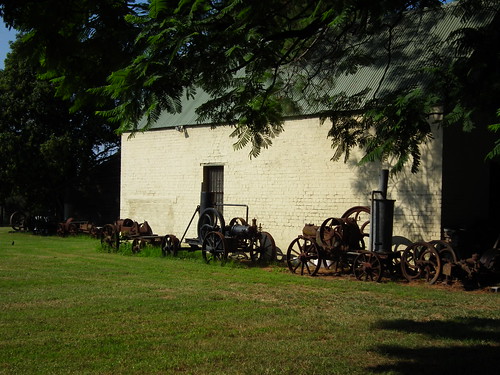 |
Stables of Emu Hall, Emu Plains, NSW sv1ambo
|
 |
| Nepean Times (Penrith, NSW : 1882 - 1962), Saturday 16 September 1933 |
On The Way To The Goldfields
Later, after gold was found near Bathurst in 1851, Emu Plains became the gateway to the west for many hopeful diggers. A man named
George Bunyan, whose family were early settlers at Emu Plains, spoke of how people rushed to the gold fields. There is a road named after the Bunyan family in Leonay.
All Those Years Ago:
"My mother has told me
she has seen Chinese with
their baskets on each end
of a bamboo pole carried
across their shoulders,"
And
"The line of Chinese would
sometimes be up to half
mile long. Then, there were
coaches and horse teams carry
ing goods and passengers to
and from Bathurst and the
west."
"Old residents have told
of the thrill it was to see
Cobb and Co. and other
coaches coming down
Lapstone Hill, now Mitchell's
Pass, with the footman blow
ing his horn. Beautiful teams
of horses were used, as each
coach company tried to have
animals of the one colour."
Nepean Times (Penrith, NSW : 1882 - 1962), Thursday 12 November 1959
Victoria Bridge, which was built across the Nepean River from Penrith to Emu Plains on the Great Western Highway was opened in 1856. The bridge was destroyed by floods in 1857, and another bridge was built, but it was also washed away in 1860. In 1869, John Whitton completed the present bridge, with the northern lane used by the rail and the southern lane for road traffic.
 |
| The original Victoria Bridge, which was built across the Nepean River from Penrith to Emu Plain, was destroyed by floods in 1857, as was its successor three years later. In 1869, with John Whitton as Engineer-in-Chief, the Victoria Bridge was completed with the northern lane carrying rail traffic and the southern lane used for road traffic. Horses, however, became nervous when trains were coming so electric bells were installed on the bridge to warn of the approach of trains from Penrith and Emu Plains stations. |
The Railway Out West
The Main Western Rail Line was opened in 1867. While the rail had reached Penrith in 1862, building the line from there to the Blue Mountains was a very difficult proposition, due to the steep gradients.
The train line went through its present location in 1867, and the Emu Plains train station opened in 1868. The name of the station was also changed from Emu to Emu Plains. At the time of the train station's opening there were about 110 people living at Emu Plains.
John Whitton, Engineer-in-Chief for Railways NSW, was given the job to redevelop the station building.
The original building at Emu Plains must have been fairly unattractive as the Nepean Times newspaper said of it: “on looking at the ‘old shanty’ one wonders how we put up with it for so long”. The present 1884 built Victorian Gothic Revival style building was
a grand gateway to the growing tourist area of Katoomba in the Blue Mountains. Read
more
Eliza Bisset was appointed Postmistress at Emu Ferry in 1873.
 |
Knapsack Gully Viaduct, Emu Plains, N.S.W., circa 1877. Sate Library of Victoria
|
 |
| Knapsack Bridge & Emu Plains, between 1910 and 1962. National Library of Australia |
The arrival of the railway was probably responsible for the increasing population of Emu Plains.
 |
| In 1878, four people died in a train crash at Emu Plains. This was the biggest railway accident in NSW at that time. Penrith City Council |
 |
| New South Wales Government Gazette (Sydney, NSW : 1832 - 1900), Friday 6 May 1870 |
The Old Emu Plains School
The Old Emu Plains School was opened in August of 1877 by Sir Henry Parkes, the Premier of NSW. The first teacher was Robert Campbell. Mr Brayley became a teacher at the Emu Plains School in 1882.
 |
| The Old Emu Plains School, NSW, was opened in August of 1877, by Sir Henry Parkes |
 |
| Photo shows former headmaster Mr Breyley at Emu Plains Public School with pupils. Australian Women's Weekly (1933 - 1982), Wednesday 4 September 1957 |
 |
| Emu Plains NSW, showing Nepean River, NSW, 1880, NSW State Archives |
Pioneer Families
Some of the pioneer families of Emu Plains are: Sheppard, Colless, Hall, Walker, Poll, Innes, Cornell, Bunyan, Hunter, Ellison, York, Evans, Upton, Fairs, Ryan, Towle, Lucas, King.
Mr and Mrs A. Lucas managed the Emu Plains Post Office for a number of years and there is a street named after the family in the area. A man by the name of Donaldson was for many years, pointsman, on the old Zig-Zag railway. He lived at Emu with his wife and family.
 |
| Nepean Times (Penrith, NSW : 1882 - 1962), Saturday 9 June 1934, page 3 |
The government stockyard was established In 1814 and the agricultural farm in 1819. A house was built for the Superintendent called "Dungarth", at a later date.
Sadly, Dungarth was demolished in the 1970s, to make way for the Emu Plains shopping centre. The site of the former entrance to Dungarth is marked by a Plane Tree on the Great Western Highway, adjacent to the shopping centre. The site of the house is marked by a fig tree in the grounds to 4 Stockade Street.
 |
| Nepean Times (Penrith, NSW : 1882 - 1962), Thursday 25 November 1948, |
Behind The Fence
Q: What lies behind the high chain-mesh fence at 34-42 The Great Western Highway, Emu Plains?
A: The ruins of the Union Inn, built in the 1850s. The Union Inn was built for Ralph Jackson Cross in 1855, on land acquired from George Dempsey, in the preceding year. Subsequent licencees were William Avery (1861-1864), George T. Clarke (1864), James Henry and Thomas Ellison (1864-1872), and George Flanders (1867-1872). From 1873, the property became the private residence of Thomas Ellison.
This former coach inn on the Great Western Highway
was destroyed by fire in 1990.
 |
Drawing of the former Union Inn, completed in the 1850s. Demolished. See original here
|
1900s
 |
| Emu Crossing, Nepean River, Sam Hood 1900, Blue Mountains Library |
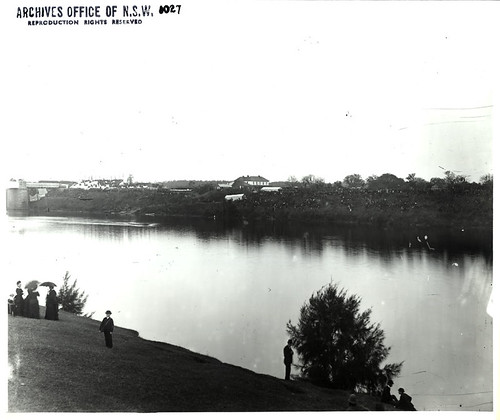 |
| View of Emu Plains, across Nepean River, from Penrith. No Copyright restrictions NSW State Archives |
 |
| The Weir, Nepean at Penrith by Arthur Judges (c.1910). The area on the Emu Plains side of the weir was to became known as Little Manly. pellethepoet |
 |
| Midget Cow and calf at Edinglassie Emu Plains, NSW, Sydney Mail and New South Wales Advertiser (NSW : 1871 - 1912), Wednesday 27 December 1911 |
Pioneer of Australian Flight
In May 1911, an important event occurred at Eden Glassie, when a man called Leslie Jones became the
first Australian to become airborne in a monoplane, which weighed 227 kg (500 lb). He built the plane himself.
 |
| Photograph of Winifred Tremain in L.J.R. Jones' aircraft at Emu Plains, New South Wales. original glass plate negative of a simple monoplane aircraft photograhped at Emu Plains, Western Sydney, in 1911. It is one of the early planes designed and built in Sydney between 1909 and 1916 by Leslie John 'Jack' Roberts Jones, 1886-1970, an outstanding, but largely unrecognised, pioneer of Australian flight. Museum of Applied Arts & Sciences |
 |
| Main road to the mountains between Emu Plains and Penrith, NSW, Sydney Mail (NSW : 1912 - 1938), Wednesday 30 July 1913 |
Correctional Centre
The property of Emu Plains Correctional Centre was purchased in December 1914 to operate as a prison farm. The idea being, that the 107-acre farm would work toward rehabilitation of young offenders through gaining employable skills in general farm work while producing vegetables and farm produce for other
government institutions.
Ten wooden huts made at Goulburn Gaol were transported to Emu Plains to accomodate the first prisoners arriving on 12 April 1915. By 1933, there were 78 huts. The adjacent property known as Inverleigh Dairy (Colless family) was acquired on 6 October 1936. An area of 93 acres known as the "Island" was added to the site in 1938.
WWI
The "Cooee March" with twenty-six men left Gilgandra on 10 October 1915. At each town on the route, the marchers shouted "cooee" to attract recruits and held recruitment meetings. By the time they reached Sydney just over one month later on 12 November, there were 263 recruits.
 |
| Evening News (Sydney, NSW : 1869 - 1931), Wednesday 10 November 1915 |
 |
Artist Elioth Gruner camp at Emu Plains and painted en plein air the painting Morning Light. Morning Light, 1916, Art Gallery of New South Wales (one of series painted at Emu Plains)
|
1920s
"Pea picking has been in full swing
for some time past, and the quantity
sent away this season will be a record
for Emu Plains. Mr Norman Hunter
is the principal grower, having about
25 acres under cultivation."Emu Plains (1915, October 23). Nepean Times (Penrith, NSW : 1882 - 1962) |
| Daily Telegraph (Sydney, NSW : 1883 - 1930), Monday 25 October 1926 |
 |
| Student teachers taking the punt across the Nepean River, NSW, after teaching in schools- at Emu Plains and Kurrajong Heights, Daily Telegraph (Sydney, NSW : 1883 - 1930), Thursday 28 November 1929 |
1930s
 |
| Newcastle Morning Herald and Miners' Advocate (NSW : 1876 - 1954), Wednesday 18 April 1934 |
 |
| Left: Aboriginal stone axes from Emu Plains, NSW. Right: Massive stone adze blades from Papua, recently used by natives as currency. Sydney Morning Herald (NSW : 1842 - 1954), Wednesday 26 March 1930 |
 |
| Prison quarters at Emu Plains Prison, NSW, Sydney Morning Herald (NSW : 1842 - 1954), Tuesday 19 December 1933 |
 |
It is Saturday afternoon at Emu Plains Prison Farm, NSW. Sun (Sydney, NSW : 1910 - 1954), Monday 16 August 1937 |
 |
| Emu Plains from Old Bathurst Rd, NSW, 1938-1940 Royal Australian Historical Society |
1940s
 |
| Nepean Times (Penrith, NSW : 1882 - 1962), Thursday 29 January 1942 |
McGrath's woolwash was established at Emu Plains around 1890. When
the workers at the woolwash declared that they would join a union, McGrath replied that if they did he would close the business. They did and he did. During WWII, Mcgrath's two nephews opened the business for a short period to wash government wool.
 |
| Million-acre Station Owner, William George McGrath, of Emu Plains, is 93 and proud of never having shouted anyone a drink. Queensland Times (Ipswich, Qld. : 1909 - 1954), Friday 4 March 1949 |
1950s
The Lewers Family
The Lewers family moved to Emu Plains in 1950. Gerard Lewers, became a full-time sculptor and his wife, Margot, worked on painting, textiles, sculpture and mosaics.
A visitor to their home, the acclaimed novelist Patrick White wrote that in: "the house at Emu Plains ideas hurtled, argument flared, voices shouted, sparks flew. It was a place in which people gathered spontaneously."
The Lewers home and collection of artworks were gifted to Penrith City Council in 1981, and Penrith Regional Gallery & The Lewers Bequest was created. The property sits overlooking the Nepean River.
 |
| Argus (Melbourne, Vic. : 1848 - 1957), Tuesday 17 June 1952 |
 |
| Penrith Regional Gallery & The Lewers Bequest, Emu Plains NSW |
 |
| Railway Station - Emu Plains, NSW, in 1950, NSW State Archives |
 |
| Class AD6002 'Garratt' locomotive enroute between Emu Plains-Lapstone/Glenbrook as part of a trial run, Dated: 21/11/1952, NSW State Archives |
 |
| Nepean G.P.S. Regatta. the Emu Plains side of the river was crowded with picnickers with lunch-baskets and rugs.Sunday Herald (Sydney, NSW : 1949 - 1953), Sunday 12 April 1953 |
 |
| Australian Women's Weekly (1933 - 1982), Wednesday 4 September 1957 |
1960s
Nepean High School opened at Emu Plains in May 1963.
1970s
 |
| Railway Station - Emu Plains, NSW, in 1971, NSW State Archives |
 |
| Parkinson's Real Estate cnr Russell street and Great Western Highway, Emu Plains, NSW. 1970s-80s |
Street Names
Russell Street in Emu Plains was named after Captain William Russell who married Sir John Jamison’s daughter. This street is a major connecting road between Old Bathurst Road and the M4 Motorway.
Sheppard Street was named after R.M. Sheppard who owned an orange orchard at Emu Plains. The land on which Shepard's orchard stood was at one time owned by William Lawson, one of the explorers, who crossed the Blue Mountains.
Westbank Avenue was named after the home of the Sheppard family, which still exists on Nepean Street (2 Nepean Street, Emu Plains).
 |
| Westbank House, 2 Nepean Street, Emu Plains, NSW |
Mortimer Street was named after John Mortimer who was licensee for the Arms of Australia Inn.
Forbes Street was named after Sir Francis Forbes who was granted land in the area.
Emu Plains has many historic buildings and a wonderful old stone church and cemetery: there are wonderful walks by the river and an art gallery to visit.
Around Emu Plains
 |
| St Paul's Anglian Church, Emu Plains and cemetery. 26 Short St, Emu Plains |
 |
| The Arms of Australia Inn, Emu Plains NSW, constructed from 1826 |
 |
| Former Assembly Hall - Emu Plains, New South Wales. Built in 1885 |
.jpg) |
| Melrose Hall - Emu Plains, New South Wales. Built in 1934 |
 |
| Heritage sandstone house, Emu Plains, NSW, often called Mortimer's House, as John Mortimer was the innkeeper of nearby Arms of Australia Inn. Joseph Barrow Montefiore, (after whom Montefiore's village, Wellington, is named) first owned this property in 1830-1833, on-sold it to William H Mackenzie (1833 or 1834), who then sold it to Mortimer in the early 1840’s |
 |
| The ruins of Green Gables Cottage (Gatekeeper's cottage), Emu Plains NSW, which was built at the foot of the hill, where the 1867 railway line crossed the main road up the mountains. |
 |
| The Emu Plains station opened on 18 August 1868. This building, however, dated from1884 combining a Station Master's residence and station offices, is an excellent example of a Victorian era Gothic Revival style railway building |
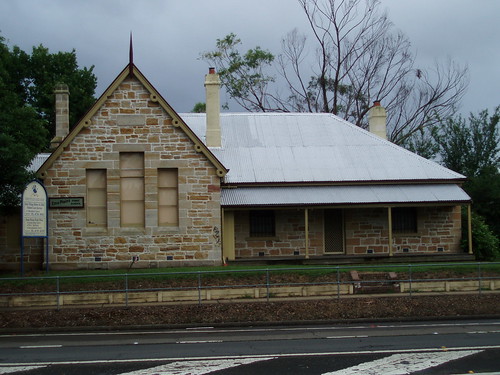 |
| Emu Plains Public School was officially opened by Sir Henry Parkes, Premier of New South Wales, in August 1877. Robert Campbell was the first teacher appointed. sv1ambo |
 |
| Victorian era property on Forbes Street Emu Plains, NSW |
 |
| O'Donohue's Irish Pub, originally built in 1886 as the Emu Hotel, NSW, sv1ambo |
 |
| Arms of Australia Inn, Emu Plains, NSW |
 |
| Huntington hall, Beach Street, Emu Plains, NSW, built in 1850 by George Tailby |
 |
| The second Emu Plains Police Station, crn Punt & River Roads, was built in 1908 and was used up until 1921 |
 |
| Historic house, called "Ellison cottage". It was built in 1860 by William Ellison an orchardist. Later the cottage was renamed “Orange Grove” cottage, Park Street, Emu Plains, NSW |
 |
| York Street, Emu Plains, NSW |
 |
| Stone church, now part of Edinglassie Retirement Home, Emu Plains NSW |
 |
| Westbank House, Emu Plains, NSW, Circa 1852 |
 |
| Heritage Edwardian house, Russell St, Emu Plains, NSW |
 |
| Heritage stone house, “Yamba”, cottage, opposite the cemetery, Nixon Street, Emu Plains, NSW |
 |
| Heritage stone house, “Yamba”, cottage, opposite the cemetery, Nixon Street, Emu Plains, NSW |
 |
| Hessel Place, Emu Heights, NSW, the home of the Hall family, circa 1895-30 (Google) |
 |
| Weatherboard cottage, Forbes St, Emu Plains (Google) |
 |
| Federation cottage, Railway Row, Emu Plains, NSW |
 |
| “Killeen”, Federation house, Walker St, Emu Plains, NSW |
 |
| The original home of Margo and Gerald Lewers, Emu Plains, NSW. The original cottage was built around the turn of the century and formed part of a ten acre pig farm. The house was purchased by Margot and Geraid Lewers in 1940. Patrick White wrote that in "the house at Emu Plains ideas hurtled, argument flared, voices shouted, sparks flew". |
 |
| Emu Plains Public School, NSW, WWII Honour Board |
 |
William Cox Festival & Open Day, at Arms of Australia, Emu Plains, NSW, with NSW Corps of Marines
|
Emu_Hall.jpg) |
| Emu Hall, Emu Plains, NSW, 1852 |
Things To Do and Places To Go



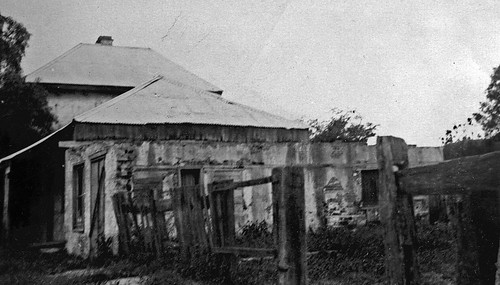



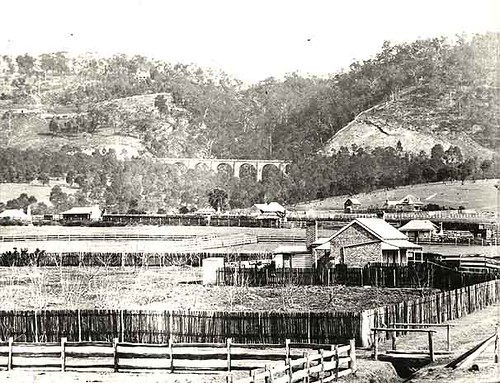




























.jpg)



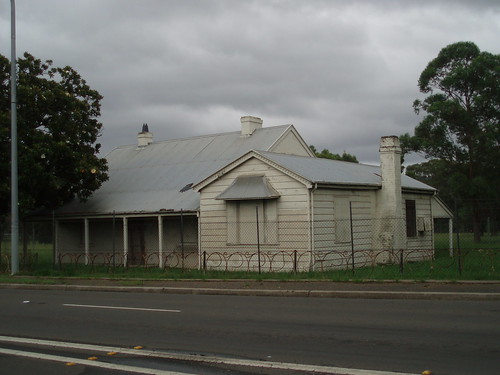

















Emu_Hall.jpg)





















